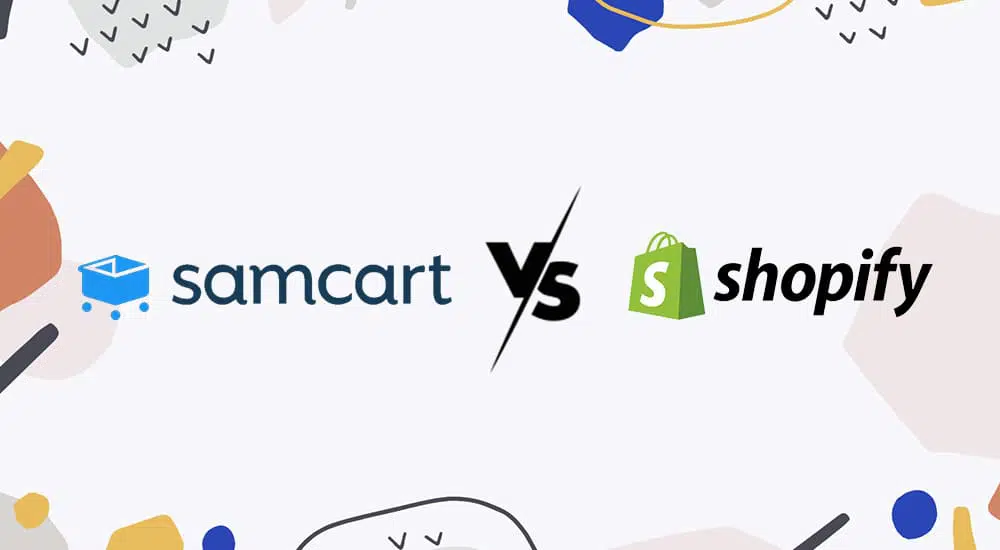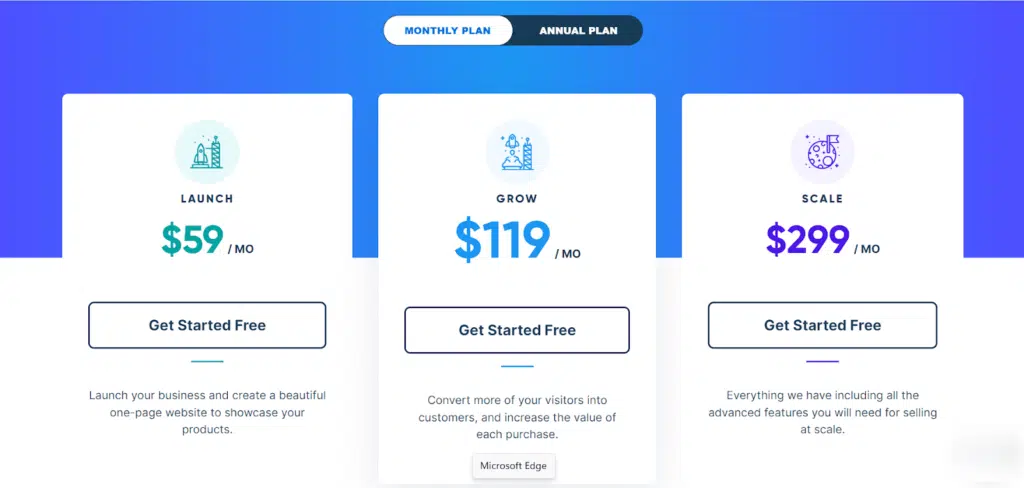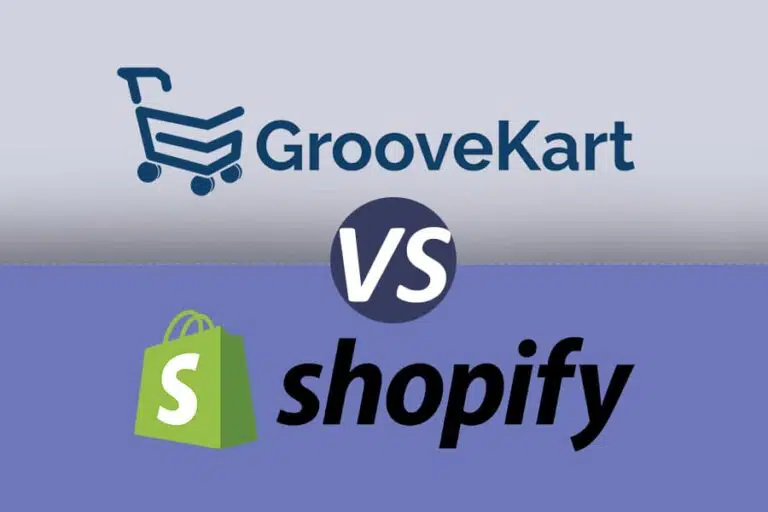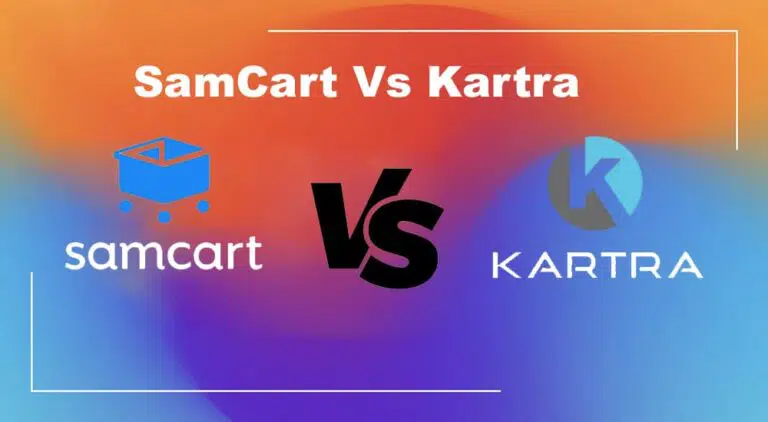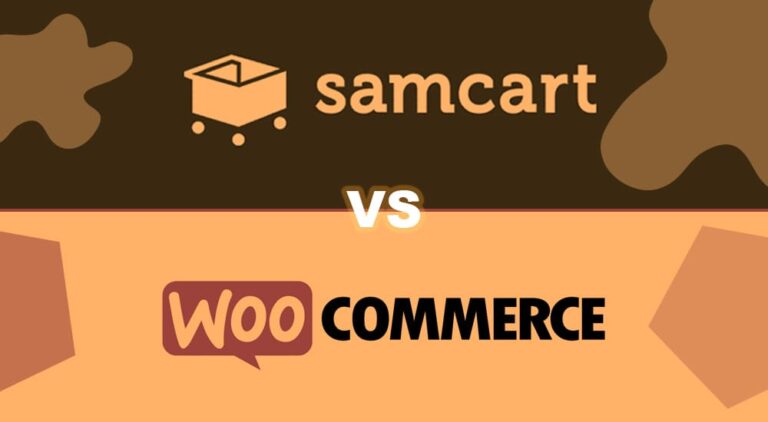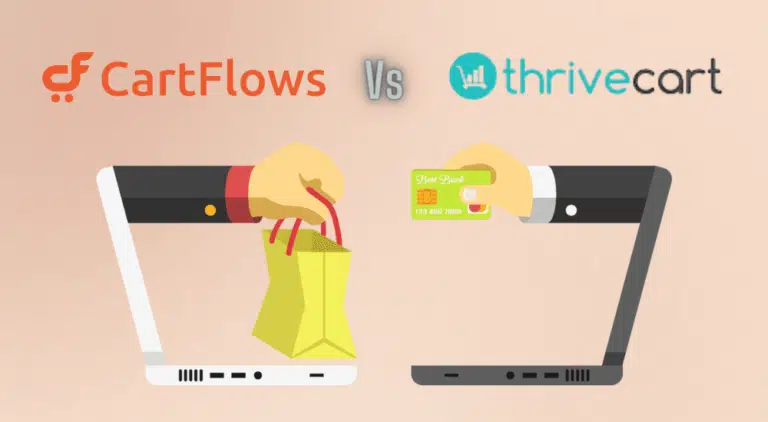This article will compare two popular shopping cart software, SamCart Vs Shopify, so you will know which software is more useful.
Both software helps you sell products and services online but have different unique features. Though Shopify has a bigger audience and serves a large audience than SamCart, SamCart has unique features and is, in many senses, better than Shopify.
Let’s get into the details.
SamCart Vs Shopify
1. Overview of SamCart
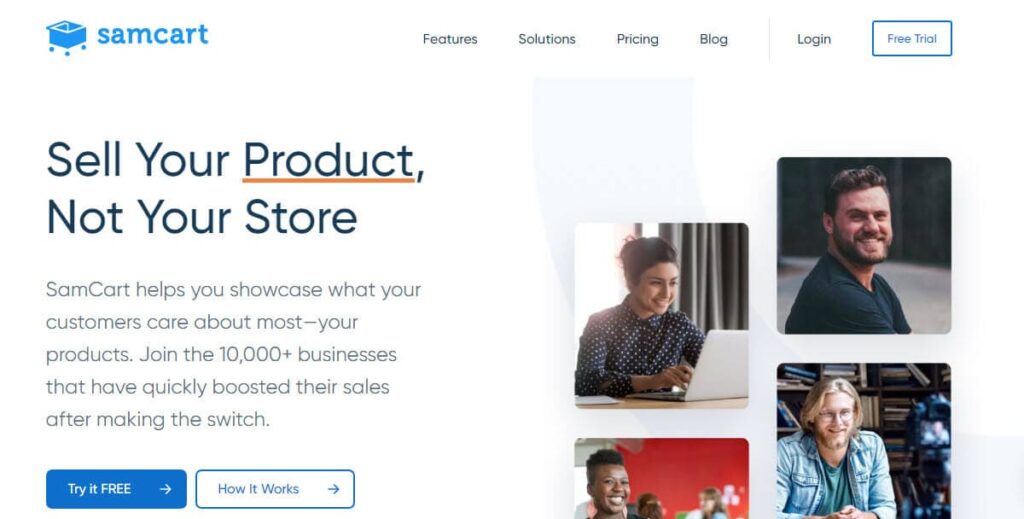
SamCart is an eCommerce tool that lets you sell products, services, and courses and brings money into your business.
Whether you are selling a course, eBook, physical product, digital product, or service, SamCart makes it easy for you.
SamCart is for product creators by product creators. The platform is the brainchild of two product creators who are also brothers, Brian and Scott Moran.
They launched SamCart in 2014, as they found it challenging to sell their products online.
They wanted to sell their products with a smooth checkout experience.
SamCart users have processed over 2.2 billion dollars, launched over 342,000 pages, and sold 9.7 million products. As of today, SamCart has over 22,000 customer bases.
SamCart is not as famous as Shopify, but that does not make it any less of an option.
We will learn more about SamCart’s functionality in the following features segment.
SamCart Features
Product Landing Pages: On landing pages, you can showcase your products. SamCart has many templates for different niches. Select the one suitable for your requirements, customize it, and start selling products.
Customization: You get a drag-and-drop builder that comes with many elements to insert media, a countdown timer, FAQs, testimonials, and everything that you may need to design your landing page and attract leads.
Mobile Responsive: In February 2022, there were over 6 billion mobile phone users. A sizable portion of the global population owns a smartphone and uses it to purchase products.
You must ensure that your pages look good on smaller screens, like on large screens.
SamCart understands it and allows you to edit pages for mobile devices.
A/B Testing: SamCart provides A/B testing that you can use to test your sales pages. You can create two variants of the same landing page and test them to determine which one converts better.
Simple-Step Checkout Page: Checkout pages can make or break your deal. Checkout pages often contain too many fields, which are time-consuming, unnecessary, and affect conversion.
This is one of the key reasons for cart abandonment. Ensure that you do not make this mistake.
SamCart has simple checkout pages that let you fill in only the required fields and connect with the most available payment gateways, including Apple Pay, Google Pay, and PayPal.
Order Bumps: SamCart lets you add order bumps to your cart when your customers decide to purchase.
An order bump is a sales technique where you can suggest another product that will complement the existing product in the cart.
Suppose you are buying a phone, and when you are checking out the order, your cart shows mobile covers that you can add to your cart with one click.
Various Payment Options: Different payment options help customers who want to buy your product or service but cannot afford the full payment; you can offer installments.
To make it easier for them and close more deals, you can introduce other ways of subscribing by offering trials, subscriptions, installments, paying when you want, and bundling payment flexibilities. In addition, SamCart lets you add different payment options.
Course Cross Sale: SamCart has also had your back if you are a course seller. You can showcase your other courses to your existing members on their dashboards.
Analytics: You can monitor your analytics, numbers, and statistics on one dashboard. You can see your revenue, subscriptions, gross sales, and everything else you want.
Subscription Saver: This option is for recurring subscriptions. When a recurring payment fails due to a card’s expiry or a blocked card, SamCart immediately informs the customer of the necessary link to update their card. This feature helps in retrieving recurring subscription sales.
Integration: SamCart lets you integrate with your other third-party applications.
Pros and Cons of SamCart
Pros
- In-depth knowledge base.
- It offers a free trial.
- Drag and drop builder.
- Various payment options.
- In-depth analytics.
- Mobile responsive.
- Simple interface.
- 99.9% uptime.
Cons
- No free plan.
- No cryptocurrency support.
SamCart Pricing
SamCart has three pricing plans: Launch, Grow, and Scale. The pricings are 59, 119, and 299 USD per month. All plans offer core features, but they have limitations on admin users, type of email support, etc.
The scale plan has all features. Here, you get priority email support, a dedicated SamCart expert, and features like subscription saver, A/B testing, and cart abandonment features. These features are not available in the other plans.
SamCart does not offer a free plan, but you get a 7-day free trial, plus you can also book a demo session with their team. If, after seeing the demo and having a hands-on experience, you decide to go with SamCart, subscribe to the annual plan instead of the monthly plan, as it will save you 33% to 47%.
Let’s now discuss Shopify.
2. Overview of Shopify

Shopify is the most popular online store builder and has been adopted by millions of businesses.
Shopify came into existence in 2006 when Tobias Lütke, its founder, created an online eCommerce solution to sell snowboards. He then realized that he could sell his solution to merchants who could benefit from the eCommerce platform to sell products and increase revenue.
Shopify has a customer base of around 4 million in 175 countries and has made sales of over 200 billion USD. Customers include well-known brands such as Raymond, Nush, and mCaffeine.
Let’s dig deeper and learn more about Shopify.
Shopify Features
Professional Themes: Shopify comes with 70+ professional themes with different styles. All themes are mobile responsive. However, only ten themes are free to use. The rest have a price range that goes as high as 300 USD.
You can select a paid theme from the theme library, insert your images and brand color, and look at how your online store looks with the selected theme. You also get access to Shopify’s stock image site at no cost.
If you like how it looks and wish to publish the theme, you can pay for it and make your store live. I like this way of trying themes.
CMS: Shopify is a CMS (Content Management System). It is like Wix or Squarespace. Here, you can host your website, use your custom domain, and fill in the need for an eCommerce solution for your online store.
Multi-language: Even though English is a universal language, millions of users prefer other languages. Shopify supports over fifty languages. So you can translate your website into your audience’s language.
Inventory Management: You can manage your inventory with Shopify. Shopify will keep track of your inventory and automatically pause the sale of products with no stock left.
Media: Your online store will be rich with media content, as Shopify supports high-quality images and videos so that you can show every angle of your product.
Analytics: Shopify has an insightful dashboard to give you a view of the numbers surrounding your online sales, profits, etc.
Pros and Cons of Shopify
Pros
- With Shopify, you get a 256-bit SSL certificate.
- Along with its Shopify Payments, Shopify offers 100 payment gateways, including Bitcoin exchange.
- Shopify provides you with over 1,000 applications.
- Shopify lets you integrate with social apps, so you do not miss out on a potential sale.
- Shopify offers 24×7 customer support.
Cons
- Steep learning curve.
- Shopify has limited built-in features and depends on additional applications for most functionality.
- Additional applications come with additional pricing.
- Shopify charges a transaction fee to use a third-party payment gateway. The fees vary in different plans.
Shopify Pricing

Shopify comes with three plans: Basic, Shopify, and Advanced. The plans’ pricing is 24, 69, and 299 USD per month.
It also offers two more plans. Shopify Starter, which starts at 5 USD per month, is best for light users of the platform. The other is ShopifyPlus, which costs around 2,000 USD and is ideal for large businesses.
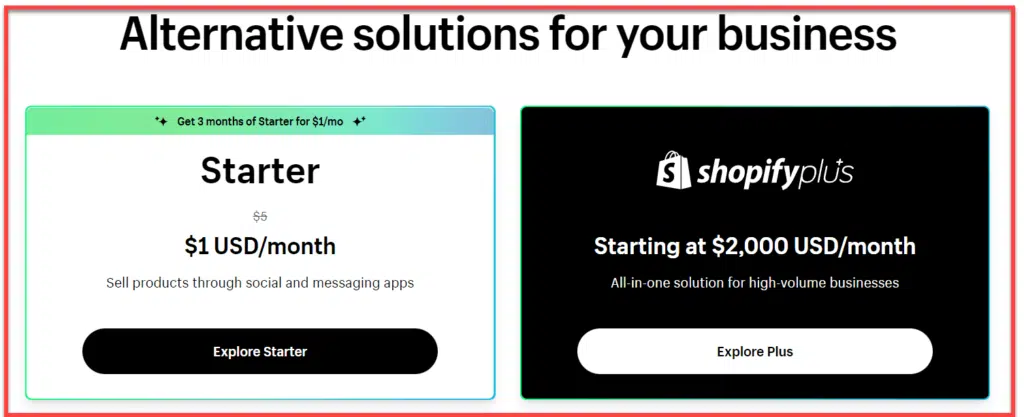
Though Shopify does not have a free plan, like SamCart, it offers a 3-day free trial with no credit card required.
I hope the above segments have helped you weigh the two eCommerce solutions.
Now let us jump into our comparison segment.
3. SamCart Vs Shopify – The comparison
Comparison of Features
If we compare the two solutions in terms of features, Shopify will win this round as it is an eCommerce builder and provides everything SamCart provides.
Comparing Shopify with SamCart is like comparing a grown tree with a growing plant. Shopify is a fully grown tree, and SamCart is a growing plant.
Shopify has a bigger customer base and more features, like inventory management, promotions management, cryptocurrency exchange, various payment gateways, etc., which SamCart lacks.
But we have to decide, so let me help you. Pick the right one based on your requirements.
If you need to sell a few products or services, go for SamCart.
If you need to build a big eCommerce website serving a global audience at a large scale, go for Shopify.
Verdict: It depends on your needs.
Comparison of User Interface
Both SamCart and Shopify have an easy-to-use interface. Shopify is complex due to its vast offerings, but things will start to sink in when you continue using the platform.
Verdict: My vote goes to both.
Comparison of Pricing
Pricing plays a key role in any decision. Neither plans are cheap. However, Shopify is inclined to cost more as it has transaction fees and separate pricing for paid themes and applications. So I would say Shopify is costlier than SamCart.
Verdict: My vote goes to SamCart.
Comparison of Support
Both solutions have decent material support. Documents, blogs, forums, and community involvement will help. But if we talk about customer support, Shopify offers 24×7 support.
On the other hand, the SamCart customer support team can serve you within a given time frame, 9 AM to 5 PM ET on weekdays.
Verdict: Shopify wins this.
Features Available on SamCart but Not on Shopify
- Abandoned Cart Saver
- Product Configurator
- Discount Management
Features Available on SamCart but Not on Shopify
- Cataloging/categorization
- Inventory control
- Shipping management
- Product configurator
- Returns management
SamCart Vs Shopify: Which One You Should Use
You can use SamCart if you have a few products or a course and want to sell quickly. It is a useful platform when you already have a website and other systems and lack an online cart system to sell products and collect money.
It is a cloud-based checkout platform that beats Shopify in this area. It provides all conversion-focused features such as one-click upsell, downsell, cross-sell, order bump, etc.
SamCart is useful in this case as it helps create a landing or checkout page and integrates with your existing website or blog. In addition, it has a better page builder and beautiful templates to design your checkout pages. All are included with the SamCart pricing.
You can use Shopify if you are into eCommerce and selling digital and physical products throughout the globe. However, it is more useful for large corporations and businesses.
It provides a complete solution.
Frequently Asked Questions
Q1: What is SamCart?
SamCart is an online shopping cart platform that helps you build an online store to sell your products online. Apart from online stores, you can sell online courses, manage affiliates, etc.
Q2: What is Shopify?
Shopify provides complete eCommerce solutions and Point of Sale at retail stores. In addition, you can create large online stores to sell physical and digital products.
It provides the most global payment gateway, international shipping, email and social media marketing support, and chat features called “Shopify ping.”
You can convert any website to an online store using Shopify embedded buy buttons.
Q3: Do SamCart and Shopify Requires Coding?
Both platforms are user-friendly and do not require coding or technical skills to build an online store. As a result, even a beginner can use these platforms efficiently with little practice.
Q4: Do SamCart and Shopify Offer a Trial?
Yes, both platforms offer a free trial. SamCart offers a 7-day trial and Shopify 3-day.
4. Conclusions
SamCart and Shopify are both robust shopping cart solutions and serve their audience well.
If you have an existing setup and looking for an easy solution to sell a few products or online courses, you can go with SamCart. However, for advanced requirements with a huge inventory or product portfolios, Shopify is a good choice.
Disclosure: Some of the links above are affiliate links, and I will earn a commission if you purchase after clicking. Please understand that I recommend these resources because they are useful, not because of commissions. Please do not purchase unless you feel that the materials will help you achieve your goals. Thank you for your support.

